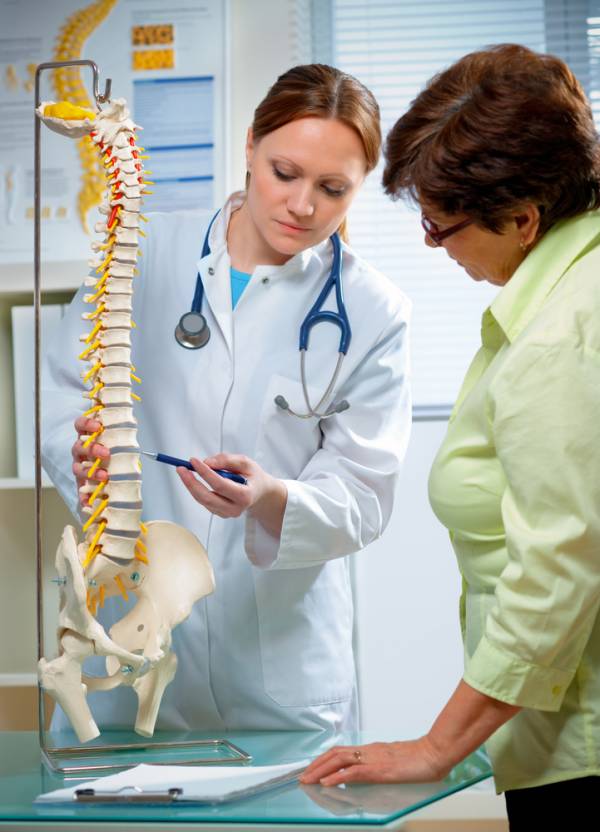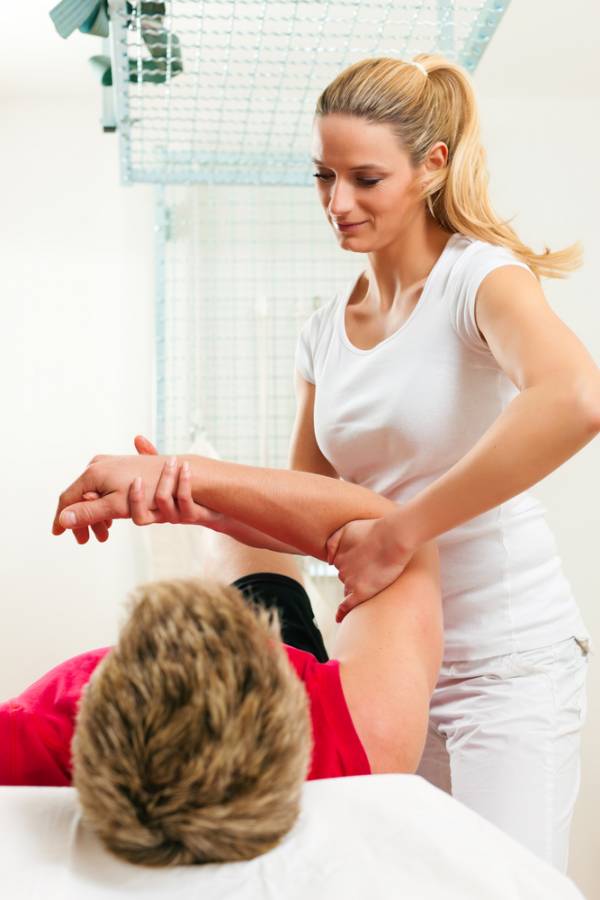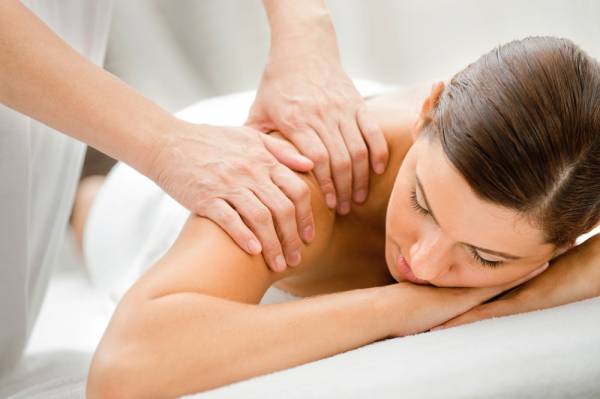Last week we explored two of the most important action steps in healing an injury – resting the affected area, and applying ice to the affected area. These two basics have survived the test of time and still hold as the best immediate response to an acute physical trauma.
What happens though when rest and ice don’t completely finish the job, or aren’t enough to get an athlete back into their sport fast enough? Sure the body has its own innate healing capacity, every living creature does. What are some other options? Options that once used to treat a current injury can also be used to prevent a future one?
Acupuncture, chiropractic, physical therapy, and massage are all relied upon equally by people who used their bodies to make a living as well as recreation athletes. Often times though, people aren’t sure which healing modality is appropriate for their particular type of injury. Today we are going to explore each one and when each can be used most successfully.
ACUPUNCTURE:
Acupuncture is but one part of the complete medical system that is Traditional Chinese Medicine and involves inserting hair-thin needles in predetermined points on the body to elicit a neurological and/or hormonal response to facilitate healing. Acupuncture has been used effectively for centuries to treat all manner of internal medical issues ranging from menstrual irregularities, menopausal regulation, infertility, and in the West for its better-known effect on pain and injury.
For athletes I recommend acupuncture in two ways:
- Preventatively acupuncture is a fantastic way to increase recovery speed during arduous training cycles, de-enflame specific trouble spots that are prone to tendonitis and pain, as well as boosting overall immune levels.
- Acupuncture can also greatly increase healing time for non structurally based acute injuries such as strains, sprains, tears, and any other trauma where inflammation is an issue (most of them), in addition to drastically reducing the recovery time needed post surgery. I get most of my referrals from Chiropractors who are having success adjustments with their patients but still finding them to have nerve pain and/or numbness lingering.
I personally used acupuncture after having my ACL partially torn from a heel hook. My treatment course was three acupuncture treatments with electro-stim per week for six weeks and in that time I went from not being able to walk without assistance to fighting MMA with a neoprene brace on. Acupuncture works.
CHIROPRACTIC:
 Founded by D.D. Palmer in 1890, chiropractic comes from the greek words “chiro,” meaning “hand,” and “praktikos,” meaning “concerned with action.” It uses the manipulation of the spine and other joints as the main form of treatment. Although the chiropractic industry has had a long and checkered relationship with the American Medical Association, it has proven itself to be both an effective means of treatment and a necessity to millions of patients.
Founded by D.D. Palmer in 1890, chiropractic comes from the greek words “chiro,” meaning “hand,” and “praktikos,” meaning “concerned with action.” It uses the manipulation of the spine and other joints as the main form of treatment. Although the chiropractic industry has had a long and checkered relationship with the American Medical Association, it has proven itself to be both an effective means of treatment and a necessity to millions of patients.
I personally refer patients to chiropractors all the time and usually it’s for one of the following two reasons:
- They come in with a clear structural issue. Patients who come in presenting with scoliosis, or acute trauma to their neck, back, or other spinus process are getting a pass from me and a direct hand-off to a chiropractor. Although chiropractors successfully manage all manner of disease, backs and necks are their bread and butter. Chiropractors know the spine like Eddie Bravo knows the rubber guard. If you fall and tweak your back, feel something go out during a heavy lift, or wake up with acute neck pain, a chiropractor may be a lifesaver.
- Soft tissue injuries, limb numbness and/or tingling, are resolving themselves and then returning in a similar pattern. If I’m treating a patient for neck pain, shoulder pain, scapular area spasms or anything similar and they leave my office without pain and/or spasm, only to return two days later (without additional trauma to the area – like seven minutes of burpees) with the exact same presentation, then I need to look further into whether the root cause of the issue is structural. If this happens again, they’re going to see a chiropractor.
After a car accident in high school (not my fault, I’m from the east coast and therefore know how to drive) followed by two incidents of much larger, beginner Brazilian jiu-jitsu players trying to twist my head off, I’m left with a compression fracture in my neck. Through regular chiropractic visits however, I’m able to keep the issue at bay and am thankful for the results.
PHYSICAL THERAPY:
 Commonly referred to as PTs, physical therapists are your body’s rehabilitative specialists. Using techniques to both facilitate expedited healing times as well as prescribing post-treatment exercises, stretches, and mobility work, PTs are a valuable tool in your healing arsenal.
Commonly referred to as PTs, physical therapists are your body’s rehabilitative specialists. Using techniques to both facilitate expedited healing times as well as prescribing post-treatment exercises, stretches, and mobility work, PTs are a valuable tool in your healing arsenal.
Physical therapists are akin to your car’s bodyshop expert. They aren’t as concerned with the motor, the plumbing, nor the exhaust, but know fenders, doors, and tires like the backs of their own hands. Developing relationships with good PTs is essential for athletes and anyone who plans on getting any older!
Physical therapy does its best work in my opinion in the following cases:
- Immediately following an acute trauma or accident, once the initial pain levels and inflammation have decreased enough to allow movement. The day of a car accident probably is the time to see your acupuncturist, or chiropractor but not your PT. That being said, once you can walk or move, they are going to be of great service. PTs will not only make sure the specific issue is healing well, but they will also give you movements to do on your own to ensure not only the injury is resolving itself, but also that it hasn’t left you with any imbalances or permanent changes in your movement patterns.
- With repeated injuries to the same area. If you’re spraining or straining the same ankle, the same shoulder, or same knee more than once, go see your local PT. When musculature is either not strong enough to do its job, or so strong that it’s doing someone else’s job, you’re going to be prone to injury. The human organism strives for balance always. We have muscles on the front of our bodies and muscles on the back of our body as well as tendons and fascia surrounding each joint. When there is an imbalance from front to back or left to right, and you add in repetition like walking, running, lifting, squatting, etc., those imbalances lead to muscles, tendons, and bones pulling on each other, rubbing up against each other, or being moved outside of their homes. Physical therapy exercises can do wonders to prevent that all from happening by re-establishing physical balance.
MASSAGE:
 Per Wikipedia, massage is the working of superficial and deeper layers of muscle and connective tissue using various techniques, to enhance function, aid in the healing process, and promote relaxation and well-being. Every week, my massage therapist, Katie Carlo, actually grabs my right scapula, or shoulder blade, by reaching through my left armpit all the while laughing ala Heath Ledger’s Joker in Batman Returns – so I’m going to tread lightly here.
Per Wikipedia, massage is the working of superficial and deeper layers of muscle and connective tissue using various techniques, to enhance function, aid in the healing process, and promote relaxation and well-being. Every week, my massage therapist, Katie Carlo, actually grabs my right scapula, or shoulder blade, by reaching through my left armpit all the while laughing ala Heath Ledger’s Joker in Batman Returns – so I’m going to tread lightly here.
Let’s break massage down into two categories just for the purposes of this article – Swedish and Sports. Swedish massage is the light, feel-good massage you get your mom for her birthday. We can write an entirely separate article on the healing power and necessity of physical touch, but for this week, let’s focus more on Sports massage or anything beyond superficial manipulation.
Let’s also start with a very basic tenet – massage is a FANTASTIC healing modality and should be used by EVERY single athlete on a weekly or bi weekly basis.
I believe that it’s best utilized in the following fashion:
- As prevention. Getting massage is similar to brushing your teeth. You don’t have to do either one, but who likes root canals or trips to the orthopedist. The beneficial health effects of regular massage for athletes include: reduction in stress hormones, the breaking up of muscle adhesions, and the release of both spasms and inflammation. Plus they feel good.
- Post injury. If you’re getting regular massages, your likelihood of injury should go way down. That being said, stuff happens. A big part of injury rehabilitation is getting fresh blood flow to the affected area. A good pair of hands will can do wonders with both a local trauma as well as the area both above (upstream) and below (downstream) from the injury itself. An injury in your neck can manifest with spasm deep in your shoulder, chest, and forearm, all which can in turn, develop into their problem. Releasing that spasm and taking pressure off of your entire system can better direct your body’s healing energy to the core issue.
All of the above four listed therapies are amazing healing systems, each with their own inherent strengths and weaknesses. None of them will do any good however, unless they are used. Athletes are notorious for not wanting to take themselves out of practice or the game unless absolutely necessary which unfortunately means that they often seek help too late. Read this great article by Pulse Beat Fit coach Lindsey Mathews for more reasons why an ounce of prevention can avoid months on the sideline.
In case you missed it, go back and read part one:
Healing Choices, Part 1: The 4 Modalities of Healing and What to Do First






